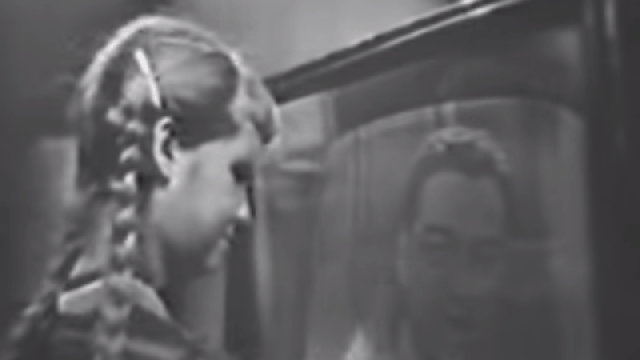Have you ever seen a kid take a marker or crayons to a phone or iPad? If so, you might be able to imagine what it was like to see kids of the 1950s drawing all over the fantastic new technology of the day: television. But in at least some cases, this wasn’t a horrifying mistake. The person on the TV screen told them to do it—provided they had purchased the “magic screen” protector, of course.
Back in the 1950s, TV ownership exploded in the United States. In 1949, just 2 per cent of American households had a television. But by 1955, TV had invaded a whopping 64 per cent of American households. And that gigantic first wave of television ownership brought new ideas about what TV could be. One idea was the first “interactive” TV show, which by today’s standards included some pretty primitive tech. Kids were encouraged to draw right on the TV screen with crayons. The only catch? You were supposed to buy a “magic screen” cover for your TV from the producers of the show.
The CBS show, titled Winky Dink and You, first aired on Saturday mornings in 1953 and was carried live by about 175 stations around the country during its first year. It became so popular that it was picked up on more stations and played on Sundays as well. And it showed that screen technology didn’t have to be a passive experience—provided you bought the proper supplies, of course.
“Right now I want you to split up your Winky Dink crayons,” the show’s host, Jack Barry, told kids. “One of you take the black and the red, and the other take the yellow and the green.”
Barry encouraged the kids at home to do things like chant magic words to transport to different lands in the Winky Dink animated universe. Winky Dink was a young, animated, child-like character whose mischievous ways would sometimes be at the expense of Barry’s trusting nature. One episode that you can watch on YouTube starts with Winky trying to take Barry’s portrait, but has him walk back so far off camera that the host falls down. Comedic gold for 1955.
Barry invited kids to draw things on Winky Dink’s family members, like flowers on the button hole of Uncle Slim’s jacket, or an entirely new nose on the old guy. Uncle Slim sneezes in reaction to getting a nose drawn on his face, as you might expect. Again, comedy gold for kids in the 1950s.
Kids were also told to follow Barry’s finger with their crayons on their “magic screen” to create drawings. For kids who didn’t have the Winky Dink kit, which could be sent away for after the show, you couldn’t see what the host was drawing. A set would cost $US1.98 ($3), roughly $US18.60 ($25) adjusted for inflation in 2018.
“Of course, if you don’t have a Winky Dink kit you can’t have as much fun because you can’t draw along with us,” Barry told kids at home.
So what about kids who didn’t get the “official set” and tried to make their own with Saran wrap and grease pencils? Kids still bought into the idea that they needed the real thing. One newspaper account from 1955 tells of how two kids in Dayton, Ohio bugged their mum endlessly for the officially sanctioned set and were “disappointed” when they wasted their allowance on the thing and found out it wasn’t really any better.
An amazing 2 million Winky Dink magic screen sets had been sold by February of 1955. Not too shabby, to say the least.
The Winky Dink kit may have been a transparent cash-grab, but it was still seen as an education force for good. In fact, most television was seen as an opportunity for educating the masses when it was first introduced. As early as the 1930s, technologists were excited about the idea of bringing the classroom into everyone’s homes. And in the 1950s, Americans weren’t quite jaded enough to believe TV was a passive technology that didn’t actually stimulate the mind.
Winky Dink had run its course by 1957 and fell off the air, but there were many attempts at a revival. As the book TV in the USA explains, when they tried to bring the show back in 1969, child advocacy organisations complained that kids shouldn’t sit so close to the television set. It’ll rot your brain, after all. That’s unlike modern social media. I hear that stuff’s got, like, vitamins and minerals.
